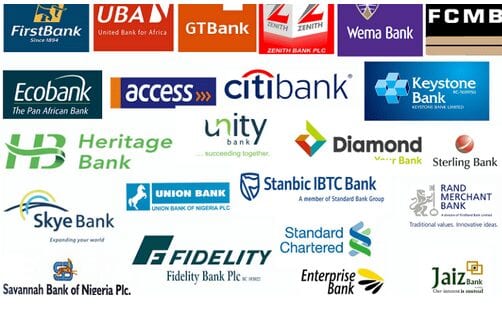There appears to be no let-up in asset quality pressure on Deposit Money Banks (DMBs) in the country, as latest figures released by the Central Bank of Nigeria (CBN) and international/ local rating agencies show a sharp rise in the industry’s non-performing loans (NPLs).
Yesterday, global rating agency, Moody’s Investors Service, published a report on the country’s banks, stating that it expects NPLs to increase to around 12 per cent over the next 12 months, compared to the five per cent as of December 2015 recorded in the CBN’s data.
It noted that while Nigeria’s five biggest banks share common credit challenges related to the slow-down in Nigeria’s oil and gas dependent economy, their ability to withstand weak economic growth and volatile monetary conditions varies.
The banks – Zenith Bank Plc (B1 stable, b1), Guaranty Trust Bank Plc (B1 stable, b1), Access Bank Plc (B1 stable, b2), United Bank for Africa Plc (B1 stable, b2) and First Bank of Nigeria Limited (B2 negative, b3) – have all been affected by the weakening domestic operating environment following the prolonged period of lower oil and gas prices.
The more challenging environment, coupled with Moody’s view of the high likelihood of support from the Nigerian government (B1, stable), largely explains the narrow range of issuer ratings of the five banks, the experts said.
“However, despite shared credit challenges, there are differences among the banks in terms of their respective abilities to withstand weak economic growth and volatile monetary conditions, which are reflected in their differing baseline credit assessments (BCAs) that range from b1 to b3,” said Akin Majekodunmi, a Moody’s Vice President – Senior Analyst and co-author of the report.
“Overall, Moody’s views Zenith and GTBank as best placed to cope, followed by Access and UBA and then FBN.” The publication of the peer comparison report follows Moody’s announcement on September 15 that the ratings agency has assigned first-time ratings to Zenith, GTBank, UBA and FBN, which account for approximately 48 per cent of Nigeria’s banking assets.
The agency said the forecast rise in NPLs stems from lower oil prices, a weakening naira, slower Gross Domestic Product (GDP) growth and rising inflation. Likewise, it expects foreign currency deposits, which have fallen around 30 per cent since the start of 2015, to stabilise over the next 12 to 18 months, as the impact of lower oil prices and the Central Bank of Nigeria (CBN)’s adoption of a Treasury Single Account fades. Moody’s expects lossabsorbing capital buffers to hold steady on account of muted loan growth of around five -10 per cent over the next 12 to 18 months.
However, as a result of this weak loan growth, net interest income and fee and commission income will remain depressed. On the upside, Nigeria’s economic potential remains strong and continues to attract investment, the experts said, adding that depositor confidence and local currency buffers at the banks also remain robust.
The agency noted: “The forecast rise in NPLs stems from lower oil prices, a weakening naira, slower Gross Domestic Product (GDP) growth and rising inflation.” In fact, last week, the apex bank released its Financial Stability Report (FSR) as at June 2016, which indicated that NPLs rose by 158 per cent from N649.63 billion as at December 31, 2015 to N1.679 trillion as at the end of June 2016.
The FSR stated: “Nonperforming loans in the period under review grew by 158 per cent from N649.63 billion at end-December 2015, to N1,678.59 billion at end-June 2016. The industry wide NPL ratio rose to 11.7 per cent from 5.3 per cent, thus exceeding the prudential limit of 5.0 per cent.”
Besides, the report noted: “At end-June 2016, loans to the oil and gas sector constituted 28.77 per cent of the gross loan portfolio of the banking system as credit to that sector grew to N4,511.34 billion, compared with N3,307.87 billion at end-December 2015. Loans to state governments rose to N1,386.61 billion from N1,053.97 billion at end-December 2015, as declining revenues continued to constrain payment of salary by some states, funding of key services and execution of developmental projects.”
Indeed, the report also disclosed: “The total exposure to the top 50 obligors stood at N5.23 trillion (33.4 per cent) of total industry credit exposure of N15.68 trillion. Credit exposure to the dominant sectors as follows: 28.77 per cent to oil and gas sector; 12.95 per cent to manufacturing; 8.84 per cent to governments; and 8.69 per cent to general commerce.”
Perhaps, more significantly, the report predicted: “Credit risk is expected to trend higher into the second half of 2016 owing to increased loan impairments resulting from the depreciation of the naira, inability of obligors to service foreign currencydenominated loans, as well as bank exposures to the oil and gas sector.”
Similarly, in its 2016 Nigeria Banking Report launched a few weeks ago, financial services group, Afrinvest, forecast that the volume of bad loans in the banking industry would hit 12.1 per cent by the end of the year. It will be recalled that the CBN had in August acceded to a request by lenders to amend its rule requiring them to keep non-performing loans on their books for one year even after they have been fully provided for.
However, in granting the banks’ request, the regulator said it would be a oneoff that will only apply until the end of this year. Industry watchers told New Telegraph last night that it was imperative that the authorities effectively tackled rising bad loans in the industry, pointing out that the CBN and the government have repeatedly stated that the country could not afford another banking crisis at this point.
Significantly, the Asset Management Corporation of Nigeria (AMCON), which was set up in 2010 to absorb bad loans during the country’s financial crisis, has said it had stopped buying NPLs and is now focused on recoveries.
NEWTELEGRAPH































